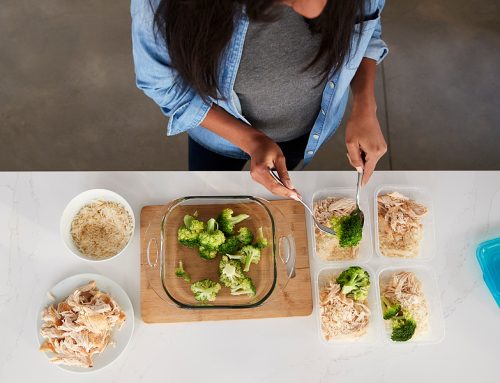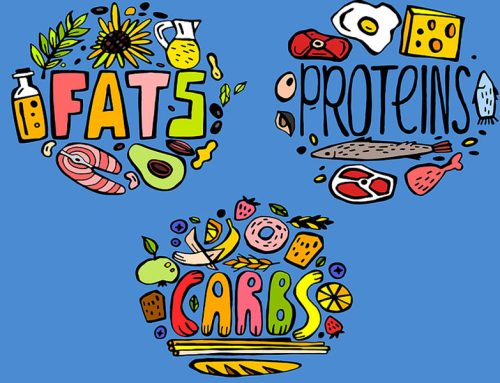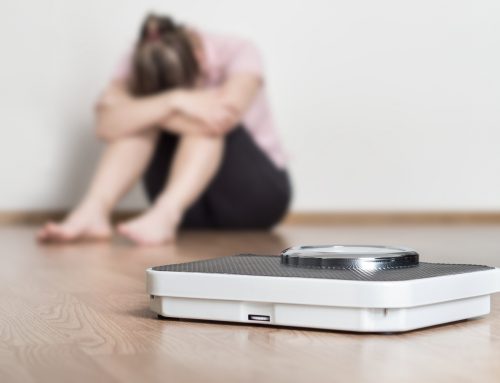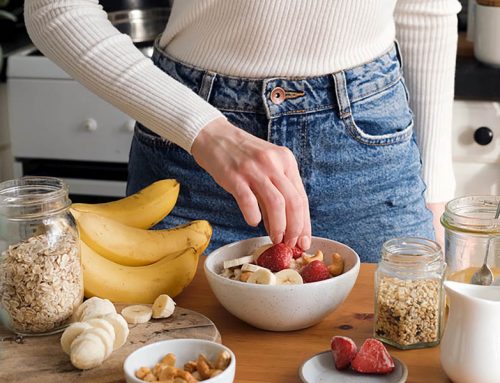A lot of people struggle with tracking calories and macros (protein, carbs and fat) and hitting their ideal macro targets every day.
In fact, many people are frustrated from day one because they can’t even figure out their ideal calorie and macro intake in the first place, let alone make a daily or weekly meal plan based on macros (without hiring an expensive coach).
I understand the frustrations and concerns. That’s why in today’s post I wanted to share two easy alternatives to setting calorie and macro goals.
![]()
Does sharing alternatives to macro tracking mean I’ve stopped recommending and teaching macro based nutrition and meal planning by the numbers?
Absolutely not!
My original best selling book, Burn the Fat, Feed the Muscle is founded on macro based nutrition.
And my newer ebook, The Burn the Fat Feed the Muscle Guide To Flexible Meal Planning is also focused primarily on macro based nutrition (see at BurnTheFat.com)
The fact is, calculating calories and macros and then creating meal plans to fit those daily targets always has been the best way to guarantee consistent and reliable improvements in body composition (less fat, more muscle).
When you get stuck at a fat loss plateau you can’t explain, following macro-based meal plans or tracking macros to make sure you hit your targets is the first and best solution.
If calculating macro goals and tracking them or following meal plans is working for you, do not stop!
What I want to share with you is the fact that there are non-counting, non-tracking methods of dieting. These can get you in the ballpark without doing any calorie or macro math or even without tracking. This is about “how to do macros without tracking.”
It’s also possible to use a mixed approach where you calculate and count at certain times in your life based on your goals and results, but then relax your approach at other times by using one of the non counting methods. Today I’ll share two of them.
1. Log your food with a macro tracking app, but don’t set specific calorie and macro goals.
I know it might sound weird to some people who are used to having daily calorie and macro goals to have no such goals and simply log in what they eat daily. But if that’s you, consider the following questions:
- Have you been horribly frustrated with trying to calculate your calories (even if you have a good online calorie calculator)?
- Are you lost when it comes to setting daily protein, carb and fat targets?
- Do you not have the budget to pay for a full service coach to walk you through it?
If so, then why keep torturing yourself? Why not relax your approach and try a different method?
Merely logging food (keeping an electronic diary of what you eat) is not as effective in guaranteeing you reach body composition goals as macro based meal planning. However, it does have value.
Logging your food daily is an awareness and accountability tool. You might not know what your ideal macro numbers are down to the gram, but you do know exactly what you are eating. Tracking with an app makes you mindful.
A powerful effect of accountability, even self-accountability alone, is that when you have to write something down or record it, this tends to change behavior (for the better). A famous maxim in athletic performance and business management is, “If you don’t measure it, you can’t manage it.”
If you have to log in foods that you know weren’t healthy, your commitment to record that behavior forces you to face up to it. Most people will then start making better choices as long as they keep tracking. Having too many days with fast food in your diet diary is like having a lot of bad grades on your report card. No one wants to see that.
When you share your food records with a coach, friend, or group, the force of the accountability is even stronger.
When logging your daily food intake, it can also in fact help you reach your fat loss or body comp goals. But this is true only as long as you use the information as a feedback tool and adjust your future intake based on your current results.
Here’s how that works:
When keeping a food log, you should monitor your daily intake and especially your weekly average intake.
Then look at your weekly change or lack of change in body weight / body fat / appearance (gather real world feedback).
If your goal is fat loss and you lost fat, then don’t worry about crunching nutrition numbers, just keep eating what you’ve been eating – it’s working!
If you didn’t lose fat, then still don’t worry about numbers, simply reduce some of your food portion sizes and then repeat. Remember, it’s possible to reduce food portions and achieve the calorie deficit you need that way without knowing all your calorie math. You can be confident that if you simply eat less than the previous week, it’s going to facilitate better results the following week.
This is how you achieve weight loss without having specific calorie or macro targets, or even lose weight without tracking macros at all.
What if someone says that logging food into a diet mobile app is too much trouble? I would tell them that’s nonsense.
I started writing this at 7:45 a.m. and at 6:30 a.m. I ate breakfast. Knowing I was going to write this blog post, I timed the food entry. It took me 39 seconds. Granted, all my foods were already entered into the app, but with bar code scanners, even if a food isn’t entered yet it only takes a few seconds more to enter each food. For my second breakfast at 10:30 a.m, I had to scan two food labels, but it still only took me 58 seconds.
Tracking all your food could take as little as 3 to 5 minutes a day, in total! Maybe it’s 7 or 8 minutes when you’re entering a lot of new custom data, but either way, it’s easy. “Logging food into an app is too much of a pain” is not a valid excuse.
By the way, what made me think about this now is that we are working with our programmers on our Burn the Fat meal planner software to upgrade the desktop features for proactive meal planning and recipe creation, and also make it work like a mobile app for easier on-the-go-tracking.
In preparation, I’ve using some of the popular mobile apps for the past month to get ideas (ok, I was “spying”). During this time, I’ve been tracking my food one meal at a time immediately after I eat.
I’ve always been a much bigger fan and advocate or proactive meal planning, but having tracked for several weeks so far this year, I’ve come to appreciate the value and ease of this method and that’s why I wanted to share this alternative to calculating specific calorie and macro goals.
For proactive meal planning and recipe creation, there is no better option than our online software, Burn the Fat Meal Planner at Burn The Fat Inner Circle. But some people have asked me what is the best macro tracking app for logging food intake on the fly with a mobile phone.
So far I have tried three. My Fitness Pal is probably the most well known and popular. I’ve also used My Macros and found it helpful. For simple food logging from a mobile app, FitBit is not bad, but it’s not as full-featured as some others – it’s more well known for tracking steps. However, the simplicity makes it very easy to use.
2. Use habit-based eating
The second method is even easier because it doesn’t require calorie and macro calculating or counting. This method also appeals to some people who have been using a tracking app for months or years and got tired of tracking macros.
It’s called habit based eating. The concept is simple: Identify a list of the critical eating behaviors you must repeat every day to reach your long term goals. There are about 10 or so of them and some are higher priority than others.
If you nailed as few as 3 or 4 of the most important habits every day, you’d be improving your body composition while also getting healthier, automatically. This is how you lose weight without tracking macros at all.
Here are two examples: One, eat a full serving of protein with every meal. Two, eat a fruit or a vegetable with every meal.
Have you developed these two behaviors as habits, to the point they are automatic? Or are you at least starting to practice them daily so they eventually become habits?
If not, then what good does it do to pull your hair out trying to nail exact daily targets of protein in grams or total daily calories on the bullseye?
Why stress over the details like grams of macros if you don’t even practice the simplest fundamentals yet?
Most people can appreciate this concept of the importance of habits. It’s logical and intuitive. If you repeat the right eating (and exercise) behaviors over and over again each day, it’s remarkable how your health, fitness, weight and body composition take care of themselves without number crunching.
You’ll be able to read even more on this subject in the near future as I have almost finished my new book that teaches every technique in detail on how to lose fat without counting calories or tracking macros.
I’m often asked, “Should I track macros or eat instinctively?” That’s the wrong question because it’s not an either or decision. I’ll say it again that recommending non-tracking strategies doesn’t mean I no longer endorse macro tracking and meal planning by the numbers.
What it means is I want to give you an additional set of tools to use that you can choose based on your situation at any time. Whoever has the most tools, the most options, the most flexibility wins. More news on the new book in the next month or so.
What if these easier and simpler alternatives don’t work? Well, after a fair trial, if they don’t work, then I’d suggest you hunker down and learn how to calculate your personal ideal calorie and macro targets and do macro based meal planning, macro tracking or both, even if you found it difficult when you first tried.
If you want to learn more about macro-based meal planning, be sure to check out this page:
==> Tom’s Guide To Flexible Meal Planning For Fat Loss
Train hard and expect success,
Tom Venuto,
Founder & CEO, Burn the Fat Inner Circle
Author of Burn the Fat, Feed the Muscle
Author of The BFFM Guide to Flexible Meal Planning For Fat Loss

Tom Venuto is a natural bodybuilding and fat loss expert. He is also a recipe creator specializing in fat-burning, muscle-building cooking. Tom is a former competitive bodybuilder and today works as a full-time fitness coach, writer, blogger, and author. In his spare time, he is an avid outdoor enthusiast and backpacker. His book, Burn The Fat, Feed The Muscle is an international bestseller, first as an ebook and now as a hardcover and audiobook. The Body Fat Solution, Tom’s book about emotional eating and long-term weight maintenance, was an Oprah Magazine and Men’s Fitness Magazine pick. Tom is also the founder of Burn The Fat Inner Circle – a fitness support community with over 52,000 members worldwide since 2006. Click here for membership details






Leave A Comment